Training can have a big impact on the way animals experience the world.
Rewards-based training methods can help keep animals safe, build stronger bonds with their guardians, and reduce their fear of unfamiliar situations. In this episode of The Informed Animal Ally’s series on animal well-being, the Vancouver Humane Society’s Chantelle Archambault and Amy Morris discuss science-backed training techniques for any species of animal, from dogs and cats to horses to birds and hamsters.
Note: This written discussion has been edited for length.
- Anyone can learn about training
- Why train animals?
- Early life experiences
- Classical conditioning
- Applying classical conditioning: habituation
- Applying classical conditioning: Desensitization and counter conditioning
- Operant conditioning
- Applying operant conditioning
- Voice and choice for animals
- Choosing an animal trainer
- Next episode
Anyone can learn about training
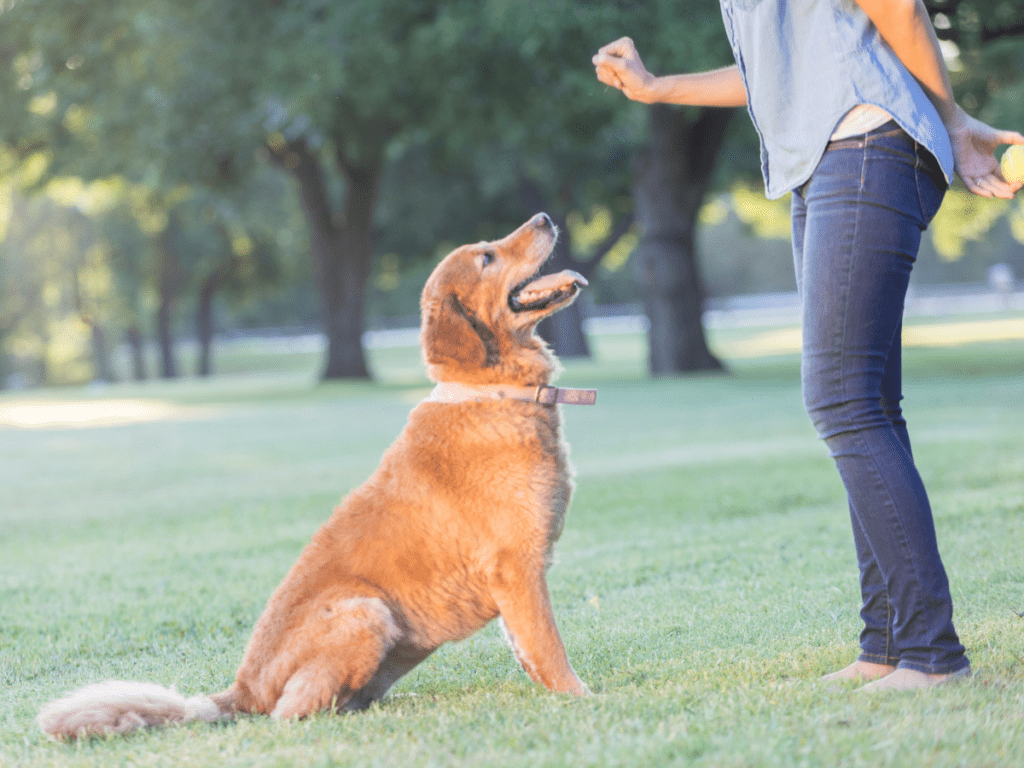
Amy: The way an animal is trained will make a big impact on their experience of the world and level of happiness. The most important thing to mention is that animal training is 100% grounded in science. Any person can learn how to train animals and can get consistent results.
There’s certainly knowledge and skills to be learned over time, and those include in particular how to best design an effective training protocol in regards to frequency and timing. The BC SPCA just released an updated 2023 literature review on dog training that gives great scientific grounding.
Why train animals?
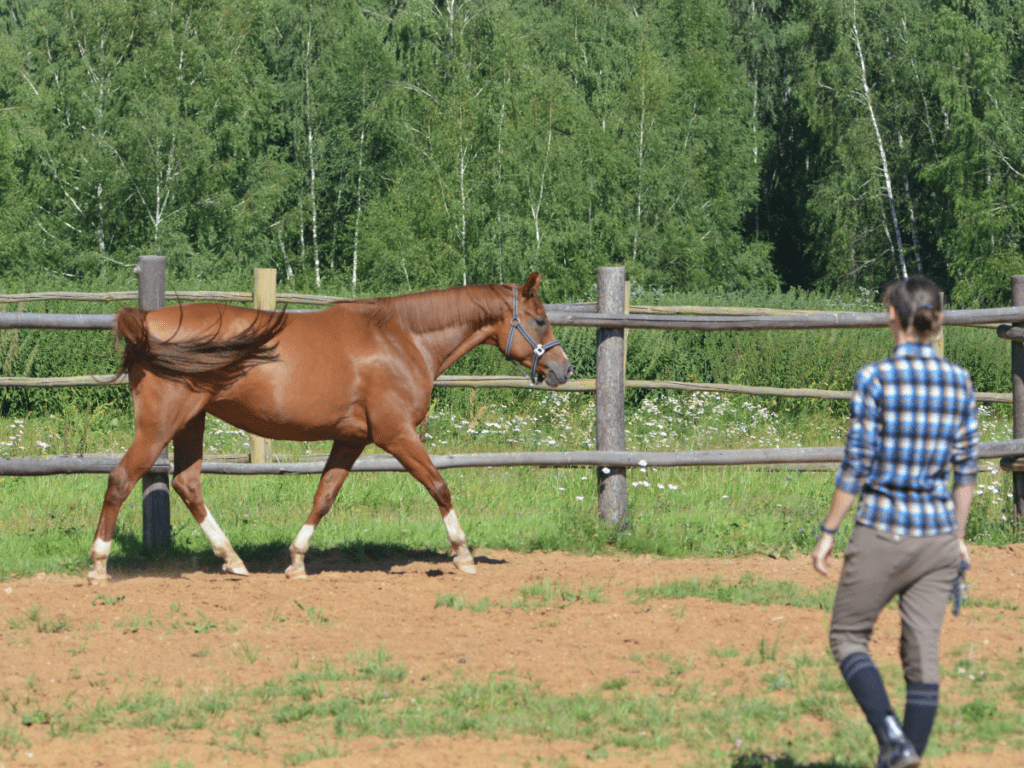
Amy: So what are the reasons to train animals? In a broad sense, there are three goals in training:
- To protect ourselves from animals that can harm us; for example, preventing us or others from being bitten or scratched, knocked or pulled over.
- To protect animals from harm, real or perceived; for example, preventing animals from getting in fights with each other, preventing them from running or or flying away and related harms like getting injured or starving, as well as husbandry activities such as grooming, foot and hoof care, and medical care and treatment.
- To build a bond between us and animals; for example, through trick training or other fun agility type activities.
Chantelle: Speaking of protecting animals from harm, real or perceived, animals can perceive harm that isn’t there, such as when they have a fear from the noise of fireworks. And training can play a big part in making our companions feel happy and healthy and safe.
Early life experiences
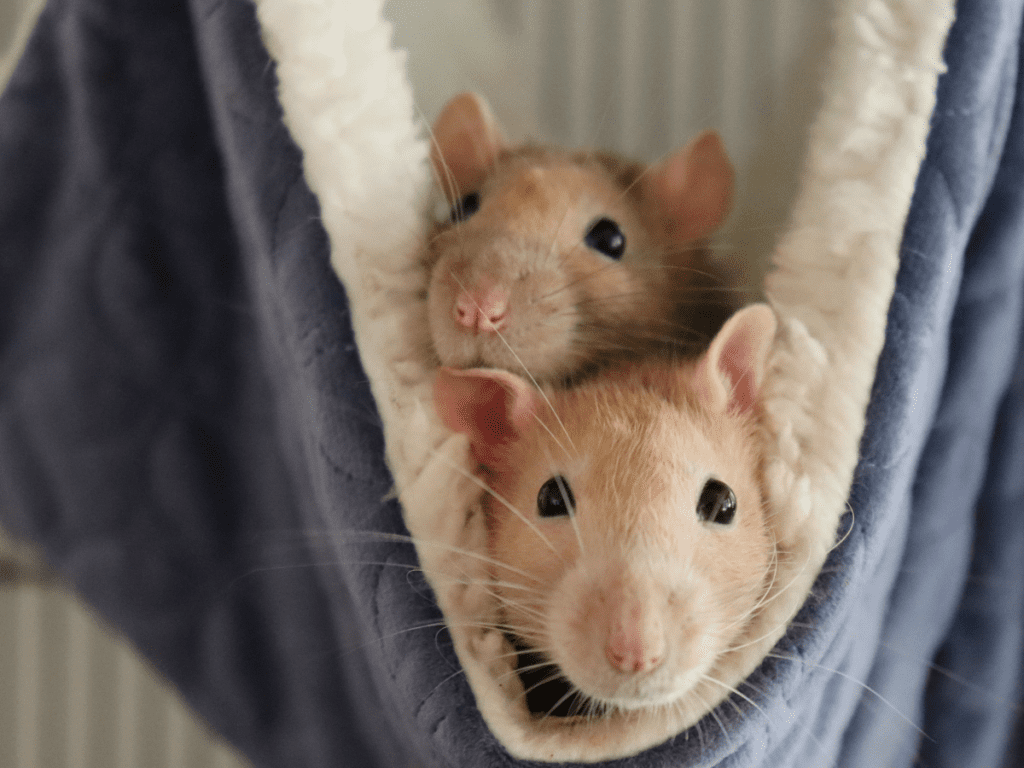
Amy: Before we dive into some specific scenarios, I’d love to talk a bit about the impacts of genetics and environment on training. The science of genetics, epigenetics, and environment on behavior is developed more in some species than others.
In a very broad sense, we understand that the negative life experiences of an animal can get passed on to their offspring. In humans, this could be labeled as intergenerational trauma.
Research in rats has demonstrated that if a rat is stressed while pregnant, the offspring will demonstrate more signs of fear and anxiety. However, there’s genetic and temperament variations within a litter, so essentially one offspring can be really fearful and aggressive, while another can come out fearful and defensive, and another could seem to be easygoing. These behaviors are seen to continue into adulthood.
It’s important to note that wild animals will be genetically fearful of humans. Feral domestic animals are those that aren’t exposed to humans in their early lives, so we know that environmental or early life experiences can play a big role as to the level of fear that domestic animals experience, such as one in response to humans.
Classical conditioning

Amy: Many people have taken psychology classes or heard of that experiment where a person called Pavlov rang a bell, which led to an animal salivating in prediction to food delivery. That’s called classical conditioning.
Chantelle: Classical conditioning is basically when a neutral stimulus like ringing a bell is paired with a stimulus that provokes a response like food.
Eventually, the animal associates the neutral stimulus with the meaningful stimulus so strongly that they start expressing the response when they’re exposed just to the neutral stimulus alone, which is why Pavlov’s dogs salivated when they heard a bell.
Now we will get into classical conditioning to better describe the role of genetics and environmental influences on behaviour. We know that classical conditioning causes a neutral stimulus to result in an involuntary response, and one example of that is a fear response.
The way people and animals respond to different stimuli, especially in terms of what causes fear and anxiety and folks’ risk tolerance, is very individual. The way that we, and other animals, respond to stimuli will differ. For example, some people can stand at the top of a high building comfortably, while others experience a fear response—things like a racing heart or sweating. Standing at the top of the building can be seen by some to present a risk, but it’s not a sign of imminent danger in itself. The same goes for walking into a loud, crowded restaurant.
For animals, some common examples we think about are skateboards or vacuum cleaners.
Amy: Classical conditioning is really interesting because, as I was mentioning, it can relate to early life experiences and temperament. One animal might hear a loud noise and be unaffected, while another will hide at a young age, and with no change or influence, will continue to hide as an adult. Fireworks are a great example of this. Many animals are terrified of fireworks because of the loud noises they elicit. Training animals with classical conditioning methods involves three concepts: habituation, desensitization, and counter conditioning.
Applying classical conditioning: habituation

Amy: Habituation can occur when a stimulus has repeated exposure and the animal doesn’t experience any consequences, they can become familiar with it.
Habituation’s effectiveness depends on the degree of sensitivity of the individual. I might be able to get used to motorcycle noises by being exposed to them over time, while another individual might find them increasingly fear inducing. The same goes for individual animals.
It can be helpful to pair positive reinforcement, such as delivering a treat, with stimuli that we think might cause fear in the future for animal to aid in the habituation process when an animal is newly being exposed to unfamiliar stimuli. Delivering a treat is one way of conditioning the animal, so instead of being fearful of something like a noise they have a neutral or positive association with it.
Once, I was caring for a mini dalmatian mix that had spent her whole life tied up or crated in a barn. I was tasked with exposing her to new stimuli as my foster. It was amazing to see the world through her eyes; she would cower when a plane went by overhead!
Chantelle: So basically, the dog you were caring for was becoming habituated to everything because she hadn’t been exposed to anything. It sounds like she was in a similar situation to a puppy going out into the world for the first time. So if an animal isn’t having a response to a new thing at all or is having just a brief startle response about something new, we can help them become habituated to the new thing.
Applying classical conditioning: Desensitization and counter conditioning

Chantelle: When an animal is already showing signs of fear as a response to something, we can use the tools of counter conditioning and desensitization as go-to methods for making life more comfortable for them.
Amy: Two examples I would love to highlight are a fear of the sound of skateboards and a fear of having nails or hooves done.
If we take a step back, first we have to identify what the animal we are working with is afraid of. We talked about fear and stress behaviours a little bit in the last episode, so I won’t go into great detail. Depending on the species, you might observe cowering, running or flying away, freezing, barking, running towards the fearful situation aggressively, hissing, swatting, scratching, pecking or more.
Once the fear behavior is observed and identified, and the cause of the fear is identified, a training plan can be created. It is best to work with a trainer who is knowledgeable about the species if you think that you or your animal are at risk of injury or further psychological damage.
For example, my dog Clover became so averse to having her nails cut that I had to work with a trainer to develop a very carefully constructed protocol for desensitizing and counter conditioning her, also called DSCC. Similarly, her fear of skateboards became problematic because she would run towards them, barking, and almost pull me over! No one else could walk her because of this risk.
Chantelle: What are some of the steps someone could take to desensitize and counter condition an animal who has a fear response?
What is an animal’s “threshold” in DSCC?
Amy: The most important thing to understand about the process of DSCC is that animals have a “threshold”. This means that there is a moment that they don’t observe the thing they are afraid of, and then there is a moment when they notice and don’t react, and then there is the moment they react. It is impossible to desensitize and counter condition an animal that is already reacting.
Some fearful animals can stay in a hypervigilant state, so they are always looking for threats. It can also be very difficult to desensitize and counter condition them. Trainers suggest creating opportunities for decompression so that an animal is more relaxed as a status quo, before starting to retrain them.
The only method to train an animal that is feeling fear is delivering a reward when they are under their threshold. They receive the reward when they notice the thing they are afraid of, but do not react to it.
It can be important to set up scenarios that keep them feeling safe and relatively below threshold.
This can mean keeping a large distance between the animal and the trigger, or with something like foot or hoof care, breaking the process down into microsteps. For example, if the animal reacts to seeing the nail clippers, then anything that happens after they see the nail clippers is going too far.
There are lots of videos on Youtube about DSCC.
Chantelle: The terms desensitization and counter conditioning are coupled together, because both are needed to change a behavior response from fearful to neutral. However, desensitization essentially describes the reduction in emotional response to the stimuli, or the outcome that is desired, while counter conditioning describes the method used to achieve that outcome, which involves changing the association the animal has made between the behavior and its consequences by pairing it with a positive experience.
Amy: Exactly! And that is what is always needed in this process: that pairing of a positive experience.
Chantelle: I did this with my companion cat Callie last year. We had fireworks going off near our home every night leading up to Halloween, and she was very fearful of them. I tried to help her get used to the fireworks by giving her a treat every time one went off. It’s a common training method, but I didn’t realize it was a classical conditioning method.
Amy: Typically a very high value reward is needed for this process, a reward that the animal does not experience any other time.
What is most important to consider with this kind of training is that it needs to involve short, intentional training period because just like us, animals reach a limit where they can’t relearn, and that limit is extremely short when it comes to situations that cause them fear.
DSCC is a very slow process, but we know from science that it works, and it just requires calm, consistent behaviour on our part.
Some scenarios we may never achieve the full outcome we are hoping for. For example, if you have a pet bird who bites your fingers as a means of protection, it might take a very long time to change that, and realistically, based the bird’s early life experiences, that behaviour may never change as much as you want it to.
Chantelle: This can be a hard concept to really absorb, so we’ve included some videos where you can see DSCC in action with a few different species.
It can be helpful to search youtube for desensitization and counter conditioning, and whatever fear issue the animal you are working with is experiencing, to get a general idea of how to address it.
Keep in mind that the person on YouTube might be making some mistakes when it comes to the value of the reward, the timing, or how much they push the animal in each session. Each animal is an individual and will move at a different pace.
I also want to note here that there’s a misconception that “taming” and “training” are completely different thing. Really, taming is just one type of training that uses the classical conditioning technique of desensitization to teach animals to tolerate human touch who normally wouldn’t, like hamsters or feral cats.
Operant conditioning

Amy: Now that we have covered classical conditioning, let’s talk about operant conditioning. This is the formal term for intentionally increasing or decreasing the frequency of a behavior using a consequence.
Something to keep in mind, that I will bring up throughout, is that the same techniques that have an impact on human behaviour, have an impact on animal behaviour. Essentially, the way you raise a child, or treat a friend, and the way you train an animal are grounded in the same science.
Chantelle: I think this is probably the thing people do most consciously with children, like giving a toddler a high five every time they put their shoes on nicely for a walk because they like high fives.
In operant conditioning, there are four quadrants representing the following four ways of training: positive reinforcement, positive punishment, negative punishment, and negative reinforcement.
- The term positive is used for when a “consequence” is something that is added.
- The term negative is when the “consequence” is that something is taken away.
- The term “reinforcement” is used to describe trying to increase the frequency of a desired behaviour.
- “Punishment” is used to decrease the likelihood of a behaviour.
Four quadrants of operant conditioning in animal training
| Positive (adding) | Negative (taking away) | |
| Reinforcement (to encourage desired behaviour) | Positive reinforcement is essentially adding something to the equation to encourage an animal to repeat a desired behavior. You can think of this as the well-timed use of food, play, or happy verbal attention to encourage them to repeat desired behaviours. | Negative reinforcement is when negative stimuli are applied to increase the frequency of a desired behaviour. A person might put physical pressure on a horse with the body of another horse until the horse offers a desired behaviour, such as turning a certain way, at which point, they give the horse space. The horse offers that behaviour as an attempt to avoid the physical pressure they were experiencing. |
| Punishment (to discourage unwanted behaviour) | Positive punishment involves adding a stimuli to a stop an unwanted behavior. This can include a person telling a dog “No” or “Stop” when they are barking. Positive punishment is often used on when walking an animal on a leash. When a dog pulls, handlers often have the tendency to tug at the leash. In this case, the handler is adding a correction as the consequence. | Negative punishment is when we take away something to get a behavior to stop. This could be, for example, walking away silently from an animal that is jumping up. |
Chantelle: Although these are all ways that can be used to train animals, we know now from research that the level of effectiveness and long-term outcomes for the psychological well-being of the animal can differ based on the technique used. These different quadrants don’t fully encapsulate the role that trust plays in each of these scenarios.
Assuming all of these training methods are applied consistently, a training method like positive reinforcement builds trust because the animal derives enjoyment from the experience through brain chemicals like dopamine and oxytocin and want to continue to seek out experiences that lead to the release of those chemicals.
On the flip side, training methods like positive punishment or negative reinforcement are grounded in the parts of the brain that seek to avoid situations that cause fear or pain and do not have a knock-on effect of building trust.
Amy: We use the words “reward-based” and “aversive-based” training to differentiate between these two.
In the literature review we referenced from the BC SPCA, 4 out of 4 data-based research studies found that training with aversive-based techniques lead to more stress related behaviours in the dogs compared to training with reward-based techniques. They also identified that 7 of 7 surveys found that more frequent reported use of aversive-based techniques, whether alone or in combination with reward-based techniques, was associated with more frequent reporting of aggression and other problem behaviours.
Applying operant conditioning
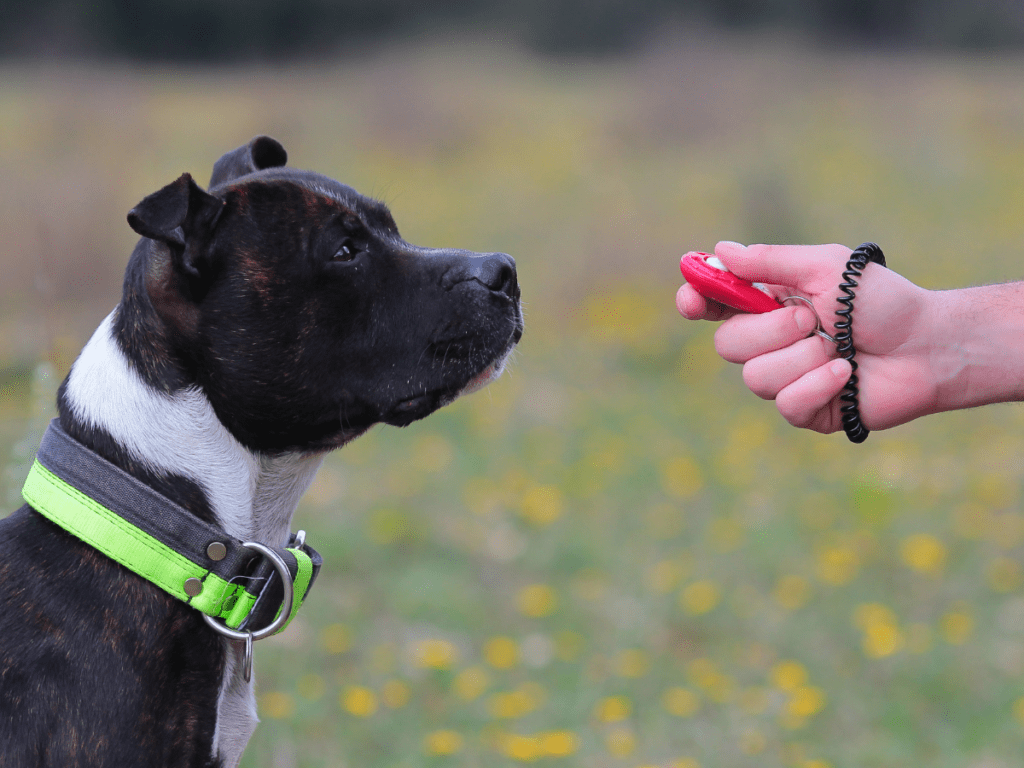
Chantelle: I was wondering if you could speak more to different training tools?
Amy: Absolutely. In an ideal world, animals could be completely naked, with no harness or halter or collar.
However, sometimes we need to attach the animal to us, or ourselves to the animal, for that added layer of safety. In those situations, we certainly don’t want to put them or us at risk, so it can get pretty high stakes, especially when you talk about large animals like horses!
The most important thing is to see a collar, leash, harness, or halter as something that the animal might be fearful of and either habituate, or, if they are already fearful, practice DSCC to ensure that they are comfortable with putting on and taking off the apparatus.
Any tool that is safe to use should not cause pain. Tools like bits that you put in horse’s mouths, or prong collars, or choke collars, or shock collars, are all designed with positive punishment training methods in mind.
A trainer might be deceptive about this. For example, think about a scenario where a dog is walking around, away from a person. The person calls the dog and gets no response. The desired behaviour is for the dog to come to the person. A trainer might suggest pairing an electric shock (positive punishment) to extinguish the undesired behaviour (walking away) with a treat when they change their behaviour, and call that positive reinforcement.
The first problem with this example is that the trainer is adding an intermediary of positive punishment into a scenario that can be trained without it. That essentially makes a person dependent on shocking their dog to get the outcomes they want, which we know from research.
The second problem is that shocking a dog is aversive and can lead to long-term negative outcomes for both the dog, and the relationships with the dog and other dogs, strangers, and the guardian, since it is brings in their fear response.
What if a dog gets an electric shock when they are next to another dog? If they are fear aggressive by nature, they might end up turning and biting that dog, connecting the fear they are feeling to the presence of that dog.
So, how do we eliminate the need for the shock collar? The answer is in identifying the original goal: for the dog to respond to being called.
This can be difficult when a dog has already latched on to the scent of an animal trail, or the visual of another dog. Similar to the idea of threshold, there can sometimes be a point of no return where a dog goes into a focus mode and no longer registers the sound of our voice.
Early recall training has to be consistent, with small wins and big rewards. You eventually build up to more complex scenarios, and it has to be done gradually. The cue used to call the dog back has to be used only in very specific scenarios, where it is always paired with a very high value reward.
For example, for a time, Clover was trained to come to me yelling “TACO”. At some point, I stopped using as high of rewards, and I even used it once or twice without a reward, and the word lost its value. The good thing is you can always train a new cue, whether it be a word that is easy to yell or whistle.
Chantelle: This is a great example of the difference between training using solely positive reinforcement versus positive punishment and positive reinforcement combined. What other examples do you have for operant conditioning?
Amy: Many people think the only way to train a horse is by putting pressure on them. Instead, horses do really well with clicker training.
A clicker is an intermediate reinforcer that gives a cue that an actual positive reinforcer will follow. This is helpful when there is a time that passes between when a behaviour happens and our ability to deliver a reward. A click can happen right away and then the reward itself can follow.
Fairhorsemanship is a great resource for clicker training horses to lunge, move hindquarters, walk at liberty and more. Great reinforcers for horses include apples, carrots, sweet feed, but can also include high fiber pony cubes, sunflower seeds, chaff and scratches depending on the horse’s past experiences with these items as well as personal preference.
In sanctuary environments, it is so important for wild animals to be able to actively participate in and opt in to their care. Clicker training works really well for this.
You can find videos online of elephants voluntarily presenting their feet to be trimmed and filed. Positive reinforcement clicker training is how they work with animals to increase their desire to participate in what is called “cooperative care”. This is the term for any grooming and body maintenance that an animal chooses actively to be part of, rather than being tied down or held down for the care to occur.
Grooming and veterinary procedures can be stressful for all species. Often, when pets go to a groomer, they are held in place by a tight cord around their neck so that they feel helpless and cannot go anywhere. This is aversive, but common because of the time and cost pressure for the grooming and expectation of the guardian.
Ideally, pets are able to opt in, and opt out, of their grooming and veterinary handling experience. This can be done through positive reinforcement training.
With animals that are already fearful, the principles of desensitization and counter conditioning would need to be applied. Veterinary professionals can be certified Fear-Free, you can learn more about this from the link in our blog.
I only work with veterinary professionals who know how to read Clover’s behaviour and have the knowledge and training to keep her calm when we are at the vet. They never restrain her. Sometimes I hold her while a technician gives her treats if a needle is involved to prevent sudden movement that would further cause her harm.
Voice and choice for animals
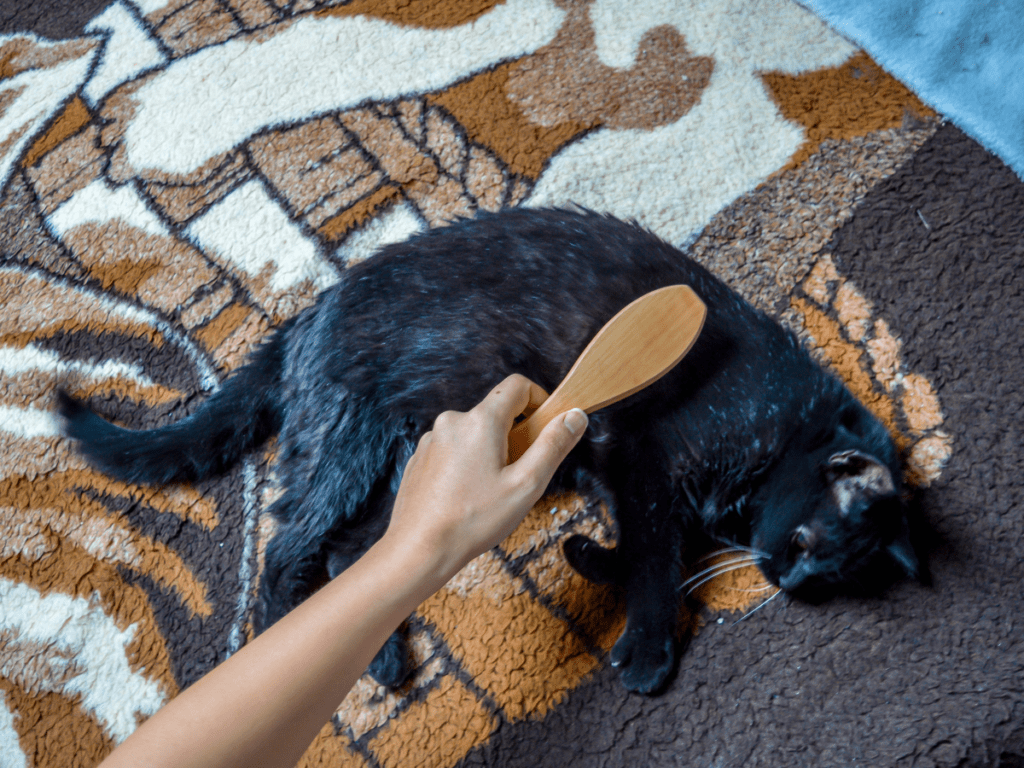
Chantelle: Mentioning the opt in and opt out sounds like consent. I’m wondering if anyone talks about consent with animals?
Amy: I’m glad you mentioned that. I often think about people picking up small animals, cats, and small dogs without identifying first if that is something the animal wants.
Similarly, people will touch the top of the head of an animal because it is the easiest to access, but typically animals prefer to be offered a hand to sniff and then will direct the hand where they want it for pets, if anywhere.
We can offer a lot to the animals in our lives by giving them the opportunity to ask for what they need without assuming what we want, such as cuddles, is something they also want.
You can train an animal to enjoy being picked up or to be pet; however, the training needs to be designed with voice and choice.
Chantelle: What do you mean by voice and choice?
Amy: Voice and choice refer to the ability of animals to communicate their needs and preferences and to have some control over their environments.
Voice refers to an animal’s ability to communicate their needs and desires through vocalizations, body language, or other forms of behavior. It is a common misconception that animals do not have a voice. We know that they communicate clearly, but it comes down to whether anyone is actively listening to them.
Choice refers to an animal’s ability to make decisions about their environment, and in reference to training, their ability to end the training session when they want. It is important to listen to their voice as you can often identify subtle signs of frustration when they start to become overwhelmed.
Providing animals with opportunities to make choices in training can help them develop problem-solving and decision-making skills.
Choosing an animal trainer
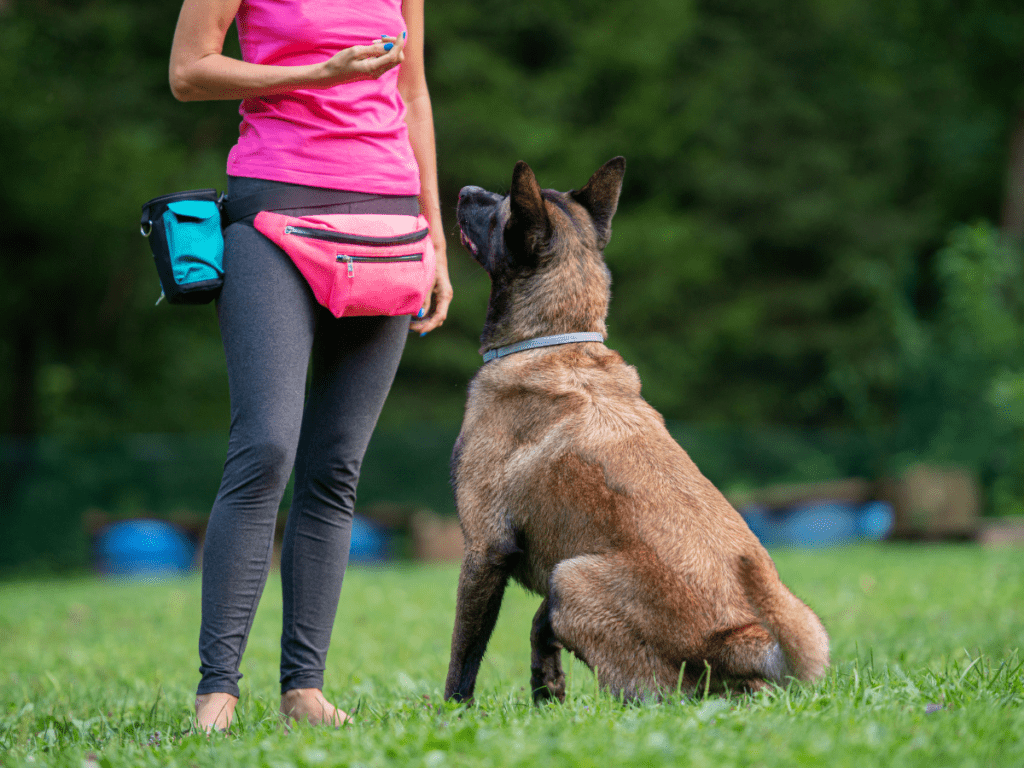
Chantelle: You spoke in the last episode about receiving advice from a trainer to encourage a dog not to bark, and most people’s response would be to trust what we see as professional advice. How do we know if the guidance a trainer is giving us is trustworthy or not?
Amy: This is something I have grappled with a lot. With my first dog, he had a big barking problem. He barked at every noise that he heard. Unfortunately, I worked with a trainer who was not knowledgeable with animal behaviour. She suggested I make something that makes a loud noise, or try a spray bottle, and introduce this each time he barked. I now know these methods as positive punishment. Citronella collars and shock collars are also positive punishment.
Sadly, I was misguided and my dog suffered for it. I now know that the best ways to manage barking behaviour involve counter-conditioning and desensitization, as well as managing the environment.
When my current dog, Clover, started barking out the window, a trainer suggested frosting the glass so she couldn’t see through.
Whenever we would move to a new place, I would give her a high value treat every time we heard a noise, before she had a chance to bark. Pretty soon, she was coming to me for treats whenever she heard a noise, instead of barking!
When trying to screen for a trainer, it is important to ask clear questions about what quadrants of operant conditioning they work with, as well as what outcomes they have seen implementing DSCC.
Avoid working with trainers who can’t speak about quadrants of operant conditioning. This is a big red flag and is really common in the horse community. Also avoid trainers who say they are comfortable using positive punishment or negative reinforcement. These are aversive methods.
Look for trainers that specifically mention positive reinforcement-based training and use food-based rewards. Ask them about desensitization and counter conditioning and see if they understand the importance of pairing timing and rewards.
There are also training accreditations that can be researched. Some are more effective than others.
If you aren’t sure about a trainer, there is probably a good reason! Anyone can call themselves a trainer and they might actually make suggestions that are harmful.
Any good trainer is focused on ensuring a positive bond between the person and their animal, and a positive experience for the animal being trained.
Next episode
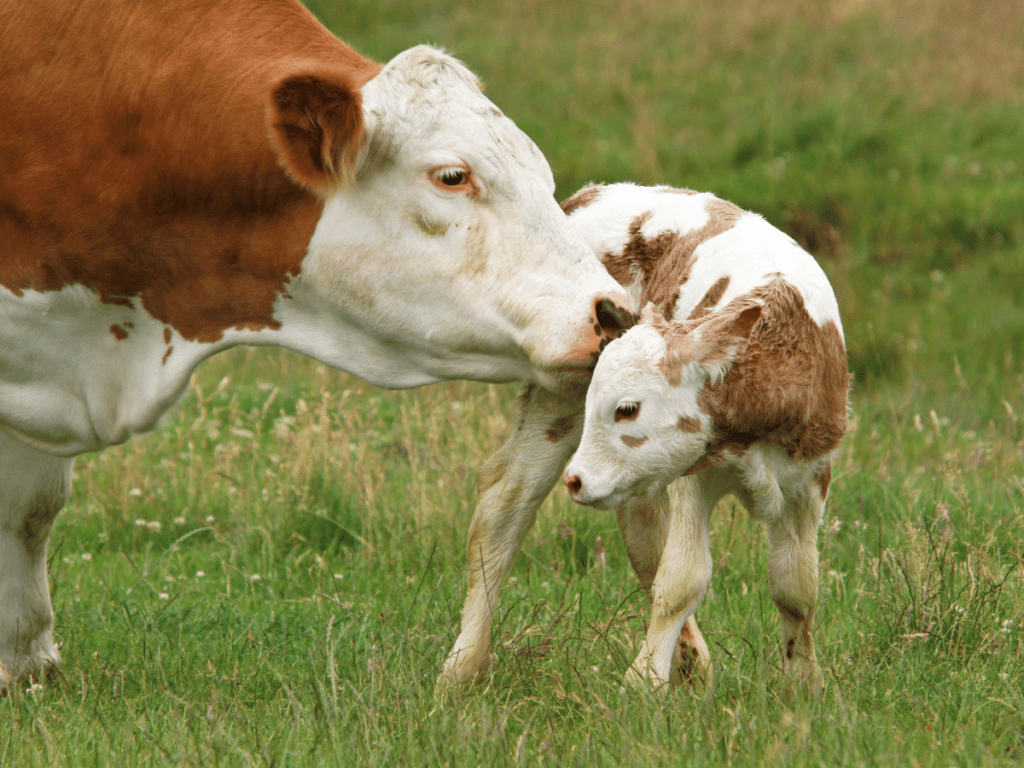
Please join us next month as we delve into the topic of well-being for farmed animals!
